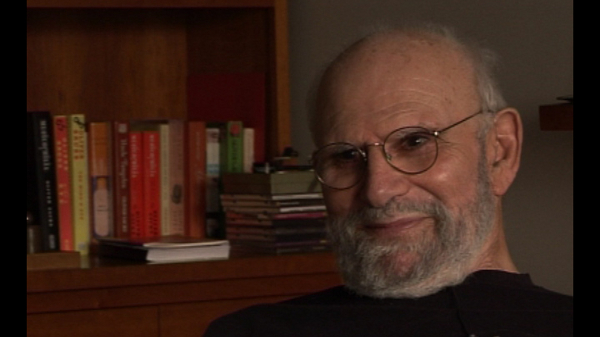NEXT STORY

The death of my mother
RELATED STORIES

NEXT STORY

The death of my mother
RELATED STORIES


|
Views | Duration | |
|---|---|---|---|
| 131. Writing, dictating, the last of the Awakenings case... | 304 | 02:37 | |
| 132. The death of my mother | 407 | 03:08 | |
| 133. Additions to Awakenings | 270 | 03:04 | |
| 134. Awakenings proof and WH Auden's compulsions | 286 | 02:37 | |
| 135. Awakenings: not a murmur from the medical press | 255 | 03:05 | |
| 136. The dangers of publishing | 277 | 00:32 | |
| 137. 'Is this your medical discretion?' | 259 | 01:45 | |
| 138. How the patients of Awakenings felt | 456 | 02:14 | |
| 139. The only changes to Awakenings for the disgruntled... | 290 | 00:18 | |
| 140. Approached by Duncan Dallas of Yorkshire TV | 383 | 01:15 |


But to go back to '69, I’d written... the way I’d wanted to write in 1969, but I couldn’t go on because I’d lost the manuscript – lost or destroyed the manuscript – I’ve said I... I had a bad history here. I had forgotten that I’d made a carbon copy of the manuscript and that I’d given it to Jonathan Miller. And in ‘72, in June of ‘72, Jonathan Miller took the typescript across the road to Duckworth, the publishers, and Colin Haycraft, his neighbour.
Gloucester Crescent was then, and perhaps is still, full of wonderful people, and Jonathan lived opposite Alan Bennett, and Alan Bennett was next door to Colin Haycraft and Duckworth. Colin did an amazing thing. I went to see Colin and he gave me the nine case histories in proof. Without consulting me or consulting anyone, he’d gone straight from uncorrected typescript into proof. And it was proof for me that he really thought the book was good. I don’t know how much money was needed then; this was, I think, a little before or only at the beginning of the advent of... of digital typesetting. I know with Migraine everything was done by hand, and I had these long, long proofs. So Colin... said, 'You’ve got to continue.' I spent three months in London that summer, and as I think I mentioned before I’d had a neck injury and I... I couldn’t... I was in a high collar and I couldn’t write or type. But it was in that summer, when I lived near Hampstead Heath, that I dictated... I didn’t dictate but I told the story of other patients to this shorthand typist. And in the evening would go down and discuss them and read them to my mother.
Oliver Sacks (1933-2015) was born in England. Having obtained his medical degree at Oxford University, he moved to the USA. There he worked as a consultant neurologist at Beth Abraham Hospital where in 1966, he encountered a group of survivors of the global sleepy sickness of 1916-1927. Sacks treated these patients with the then-experimental drug L-Dopa producing astounding results which he described in his book Awakenings. Further cases of neurological disorders were described by Sacks with exceptional sympathy in another major book entitled The Man Who Mistook His Wife For A Hat which became an instant best seller on its publication in 1985. His other books drew on his rich experiences as a neurologist gleaned over almost five decades of professional practice. Sacks's work was recognized by prestigious institutions which awarded him numerous honours and prizes. These included the Lewis Thomas Prize given by Rockefeller University, which recognizes the scientist as poet. He was an honorary fellow of both the American Academy of Arts and Letters and the American Academy of Arts and Sciences, and held honorary degrees from many universities, including Oxford, the Karolinska Institute, Georgetown, Bard, Gallaudet, Tufts, and the Catholic University of Peru.
Title: Writing, dictating, the last of the "Awakenings" case histories
Listeners: Kate Edgar
Kate Edgar, previously Managing Editor at the Summit Books division of Simon and Schuster, began working with Oliver Sacks in 1983. She has served as editor and researcher on all of his books, and has been closely involved with various films and adaptations based on his work. As friend, assistant, and collaborator, she has accompanied Dr Sacks on many adventures around the world, clinical and otherwise.
Tags: Duckworth Publishers, Awakenings, Migraine, Jonathan Miller, Colin Haycraft, Alan Bennett
Duration: 2 minutes, 37 seconds
Date story recorded: September 2011
Date story went live: 02 October 2012